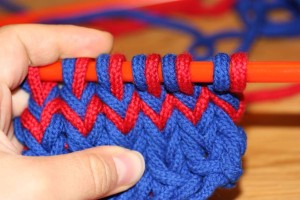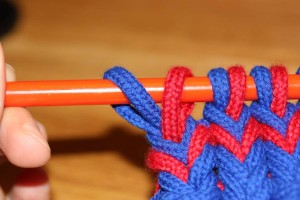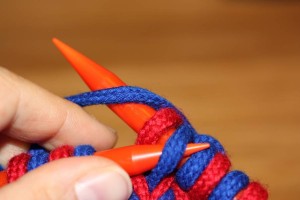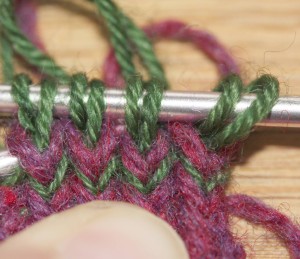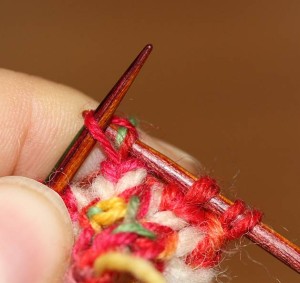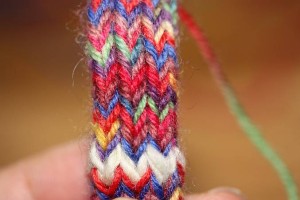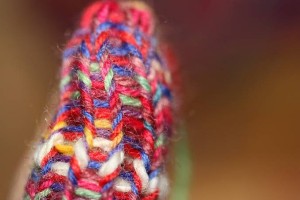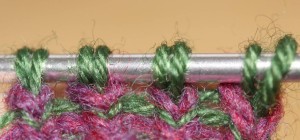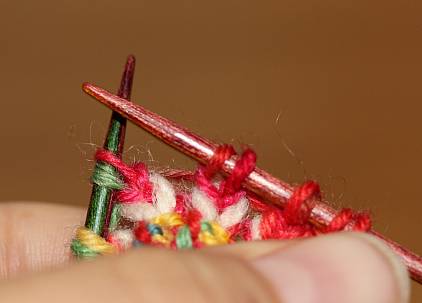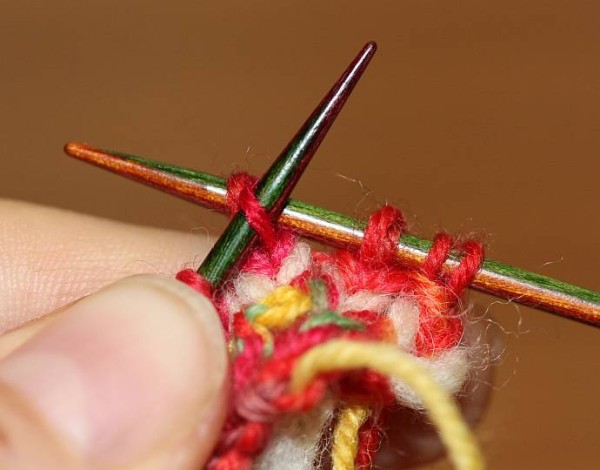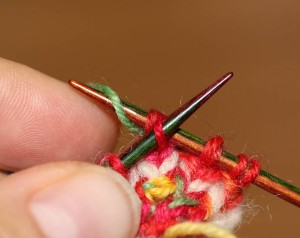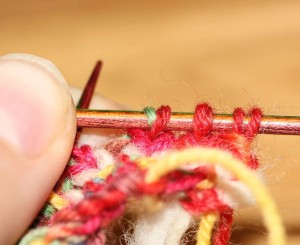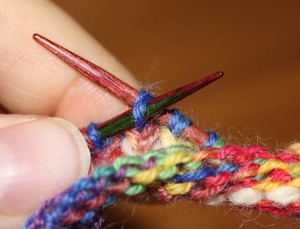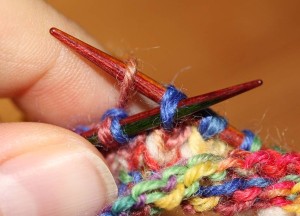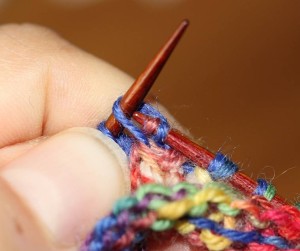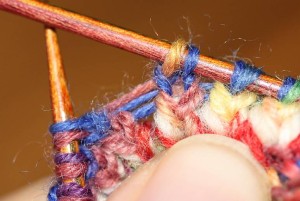You're getting a late blogpost today because I had slow internet today, and it even ate a half-written post... but you are getting one, and it is one with free stuff! (Very fitting for the season...)
First of all, as a reminder - free ebook in Aarhus Uni Press this month is Woven into the Earth. Go download it if you haven't done so yet, and tell your friends who are interested in archaeological textiles. This is a wonderful book, and it is definitely good to have.
You already downloaded it? You would like more books? Here you go.
On a completely different, and very much non-archaeological note - there is a free e-book about working with MS Word, "Microsoft Word for Publishing Professionals" by Jack M. Lyon. A few years ago, the author's newsletter "Editorium" helped me a lot when prodding my thesis text into shape, as well as later when I had typesetting to do. If you're working with Word (as so many people in the social/historical/archaeological sciences do), you might want to give it a look.
And now on to the juicy bits.
I had the opportunity to visit Estonia for a few days, and I didn't only meet lovely fellow textile people and fellow archaeologists and got to see exciting finds in several museums and a good number of the Estonian textile finds, I also brought home some books (about, who would have guessed it, Estonian textile finds). Two of them are about the finds from Siksälä, which is a burial site used continuously from the 11th to the 15th century - the Estonian Iron Age and Middle Ages. Siksälä has yielded exceptionally rich finds, including textiles wonderfully decorated with bronze spirals. There's a publication in two parts, a text part and a catalogue part; both are in Estonian*, but anyone can look at the pictures and construction drawings. And if I say anyone, I do mean it - both the first volume and the second volume are available online, free of charge, thanks to the University of Tartu.
Another absolutely amazing Estonian find is the craft box from Lohavere (which should be written with a little ~ sitting on top of the o), which comes from the hillfort of the same name, dated to the 12th and early 13th century. If you know the Mästermyr find and have always dreamt of something similar, but related to textiles? Here it is. The craft box, made from birch bark, contained textile remains, prefabricated and half-finished products, bronze ornaments and tools, some of them neatly stored in smaller boxes or little pouches. It is an absolutely fascinating find and gives so much information about how the spiral decorations were worked... and it, too, is published in a little book, and that, too, is available online free of charge.
These finds absolutely deserve to be better-known - so feel free to spread the word, and of course enjoy the publications of these gorgeous finds!
*Estonian is a language belonging to the Finno-Ugric group, and more or less related to Finnish. A few fun facts: Estonian has fourteen cases. Yes, fourteen - because there are no words to signal direction (like "into" or "from"), and a case is used instead. More fun facts? Estonian has no genders, so there's no problem with being politically correct. Because there were a lot of Germans in Estonia in the Middle Ages (Hanseatic League was a reason for that, for instance) there are quite a few German words still around, which makes not understanding most of the rest even more peculiar. Final fun fact for today: as I'm easily amused, it diverted me no end that the greeting "Tere" sounds much like the southern German colloquial "Dere" (which is very short for "Habe die Ehre", I have the honour). If you're intrigued now, here are a few useful Estonian phrases, and here is a very interesting pdf with facts about Estonian.
First of all, as a reminder - free ebook in Aarhus Uni Press this month is Woven into the Earth. Go download it if you haven't done so yet, and tell your friends who are interested in archaeological textiles. This is a wonderful book, and it is definitely good to have.
You already downloaded it? You would like more books? Here you go.
On a completely different, and very much non-archaeological note - there is a free e-book about working with MS Word, "Microsoft Word for Publishing Professionals" by Jack M. Lyon. A few years ago, the author's newsletter "Editorium" helped me a lot when prodding my thesis text into shape, as well as later when I had typesetting to do. If you're working with Word (as so many people in the social/historical/archaeological sciences do), you might want to give it a look.
And now on to the juicy bits.
I had the opportunity to visit Estonia for a few days, and I didn't only meet lovely fellow textile people and fellow archaeologists and got to see exciting finds in several museums and a good number of the Estonian textile finds, I also brought home some books (about, who would have guessed it, Estonian textile finds). Two of them are about the finds from Siksälä, which is a burial site used continuously from the 11th to the 15th century - the Estonian Iron Age and Middle Ages. Siksälä has yielded exceptionally rich finds, including textiles wonderfully decorated with bronze spirals. There's a publication in two parts, a text part and a catalogue part; both are in Estonian*, but anyone can look at the pictures and construction drawings. And if I say anyone, I do mean it - both the first volume and the second volume are available online, free of charge, thanks to the University of Tartu.
Another absolutely amazing Estonian find is the craft box from Lohavere (which should be written with a little ~ sitting on top of the o), which comes from the hillfort of the same name, dated to the 12th and early 13th century. If you know the Mästermyr find and have always dreamt of something similar, but related to textiles? Here it is. The craft box, made from birch bark, contained textile remains, prefabricated and half-finished products, bronze ornaments and tools, some of them neatly stored in smaller boxes or little pouches. It is an absolutely fascinating find and gives so much information about how the spiral decorations were worked... and it, too, is published in a little book, and that, too, is available online free of charge.
These finds absolutely deserve to be better-known - so feel free to spread the word, and of course enjoy the publications of these gorgeous finds!
*Estonian is a language belonging to the Finno-Ugric group, and more or less related to Finnish. A few fun facts: Estonian has fourteen cases. Yes, fourteen - because there are no words to signal direction (like "into" or "from"), and a case is used instead. More fun facts? Estonian has no genders, so there's no problem with being politically correct. Because there were a lot of Germans in Estonia in the Middle Ages (Hanseatic League was a reason for that, for instance) there are quite a few German words still around, which makes not understanding most of the rest even more peculiar. Final fun fact for today: as I'm easily amused, it diverted me no end that the greeting "Tere" sounds much like the southern German colloquial "Dere" (which is very short for "Habe die Ehre", I have the honour). If you're intrigued now, here are a few useful Estonian phrases, and here is a very interesting pdf with facts about Estonian.




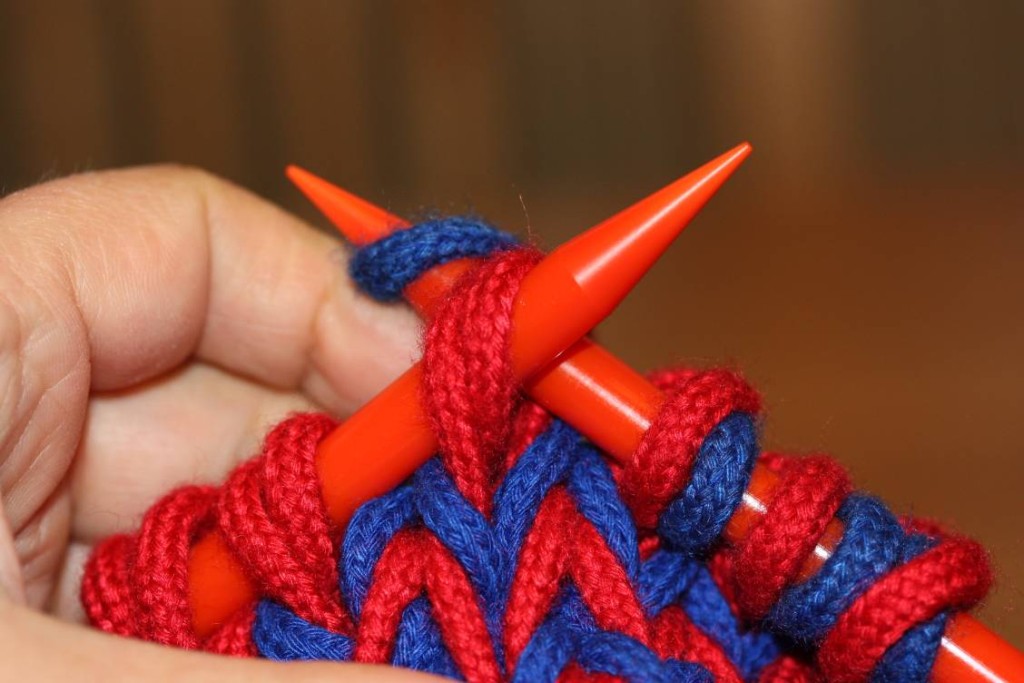 Insert right needle straight through both stitches on the left needle and wrap yarn from back to front (so the right leg of the new stitch will lie in the back)...
Insert right needle straight through both stitches on the left needle and wrap yarn from back to front (so the right leg of the new stitch will lie in the back)...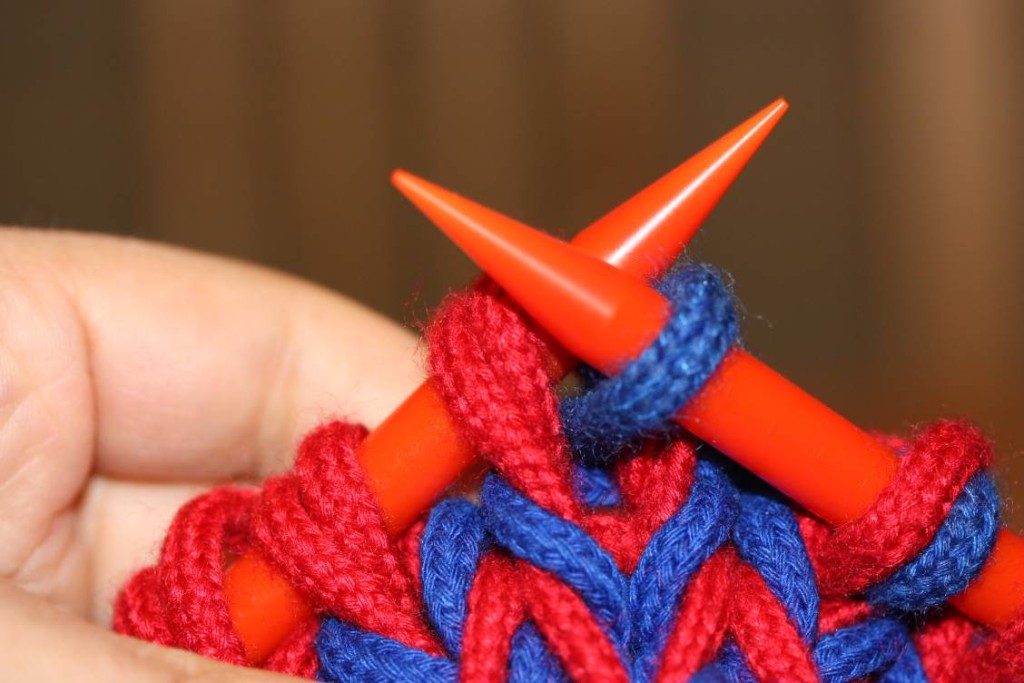 ...draw through both stitches on left needle...
...draw through both stitches on left needle...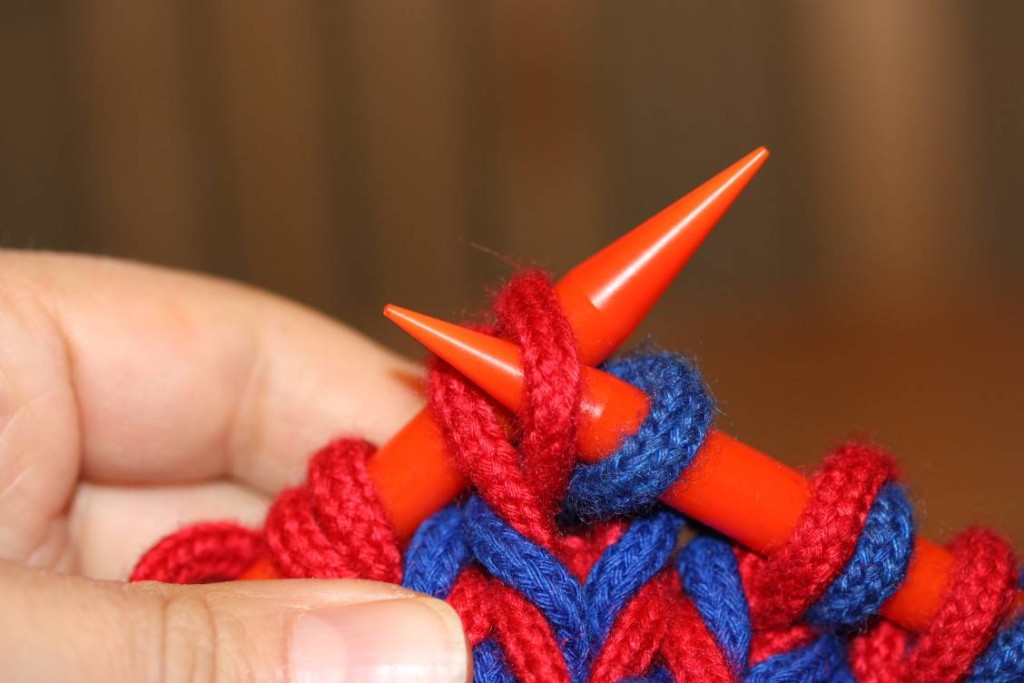 ...and move the first stitch on the left needle over to the right.
...and move the first stitch on the left needle over to the right.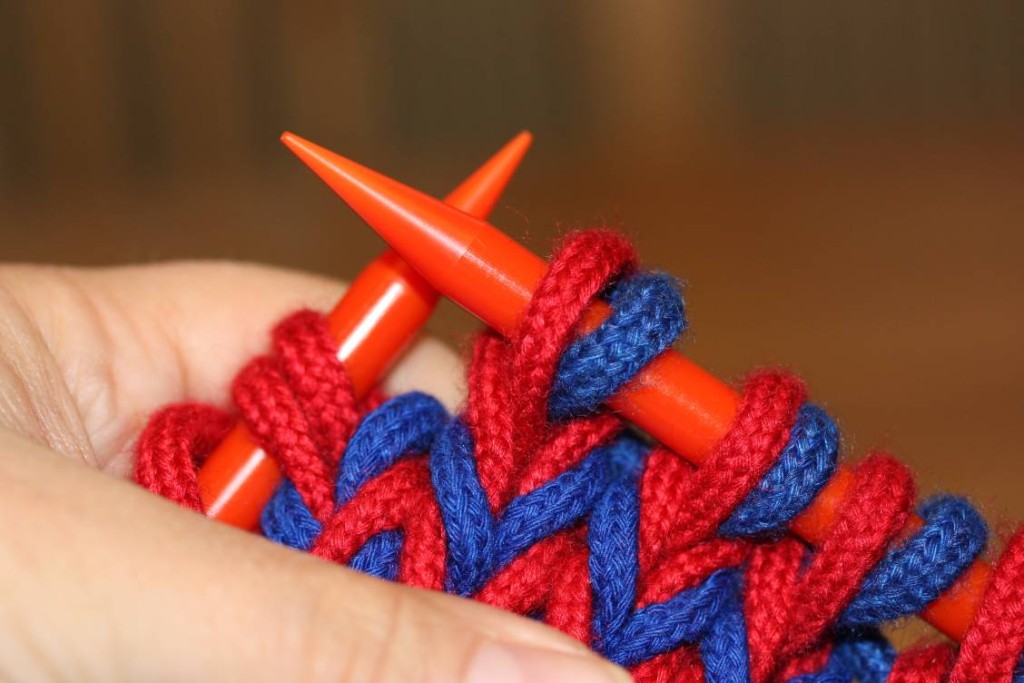 The new stitch lies on the right, the older stitch on the left.
The new stitch lies on the right, the older stitch on the left.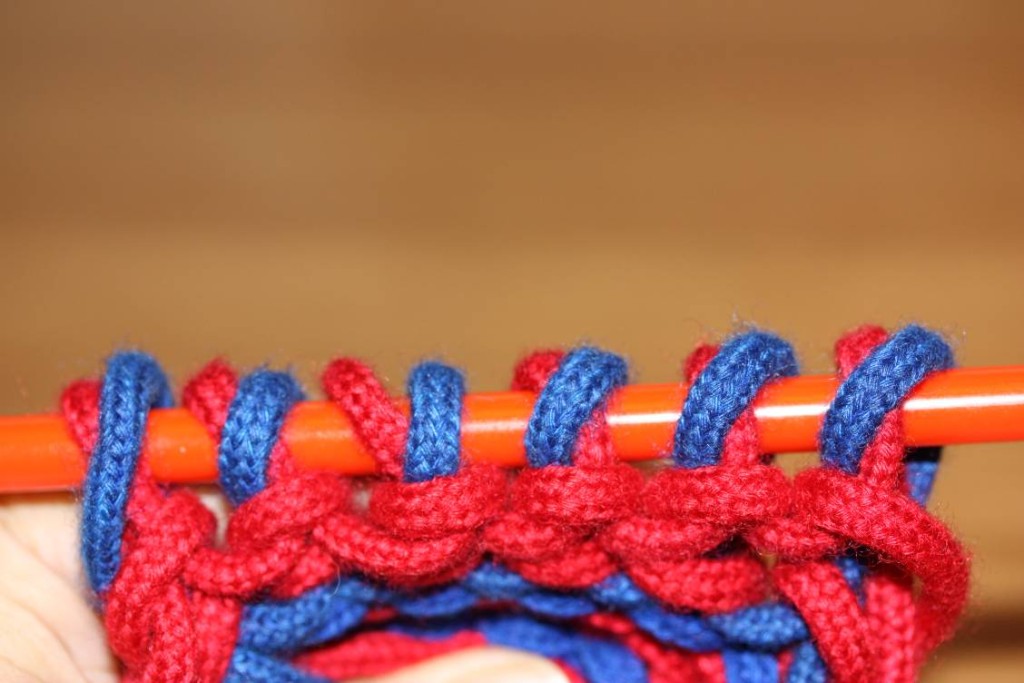 View from the back - you can see how the stitches sort of cross over each other on the needle.
View from the back - you can see how the stitches sort of cross over each other on the needle.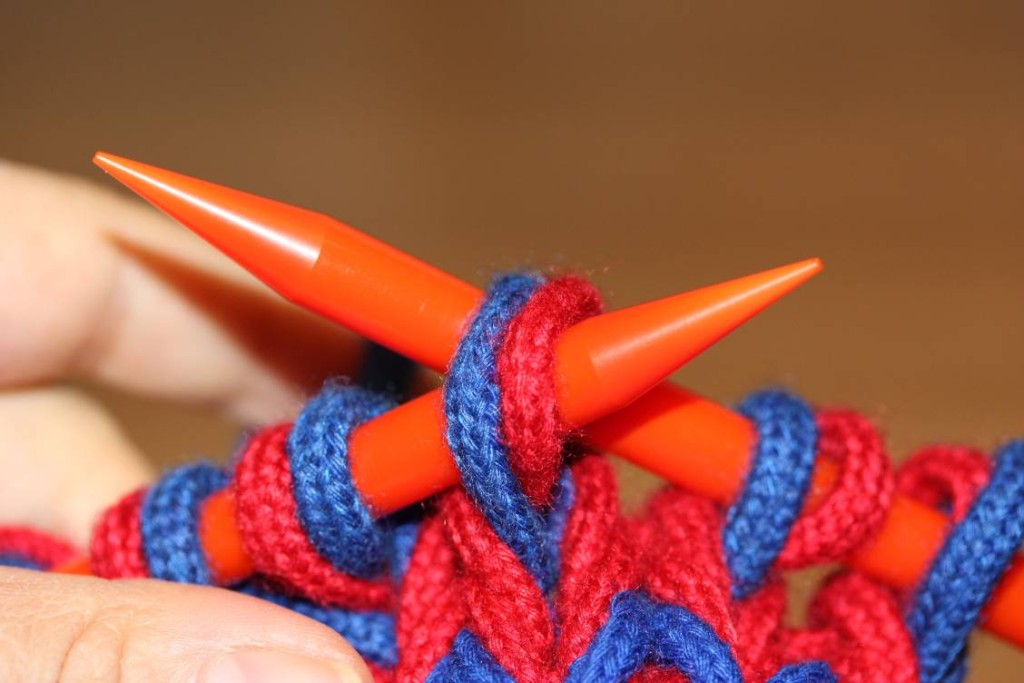 Insert left needle through both stitches on right needle.
Insert left needle through both stitches on right needle.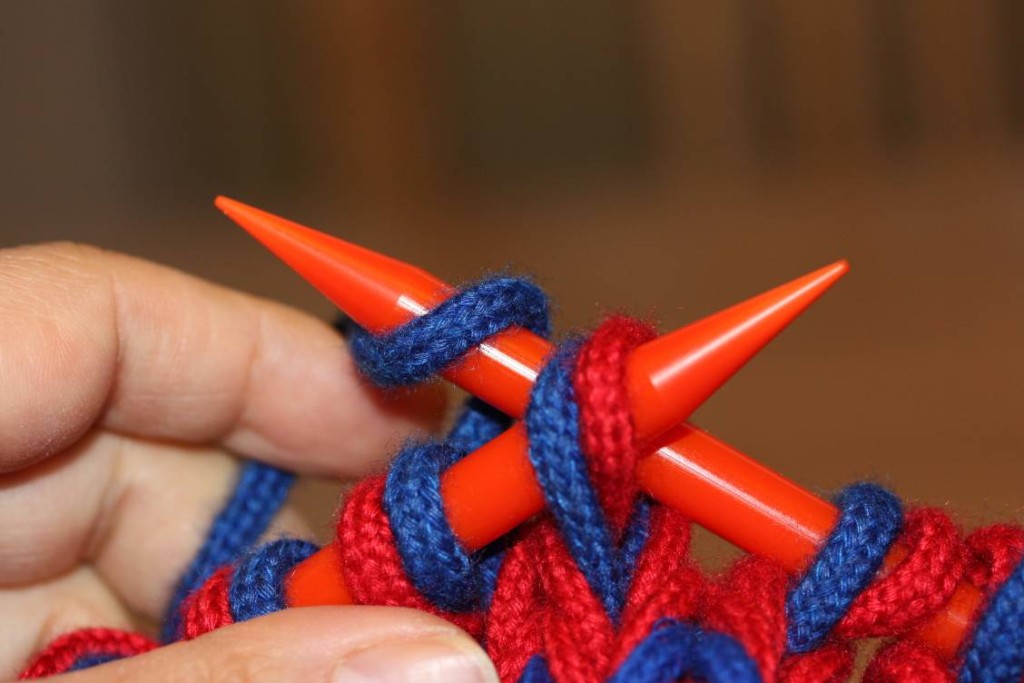 Wrap yarn from back to front around right needle, pull through both stitches...
Wrap yarn from back to front around right needle, pull through both stitches...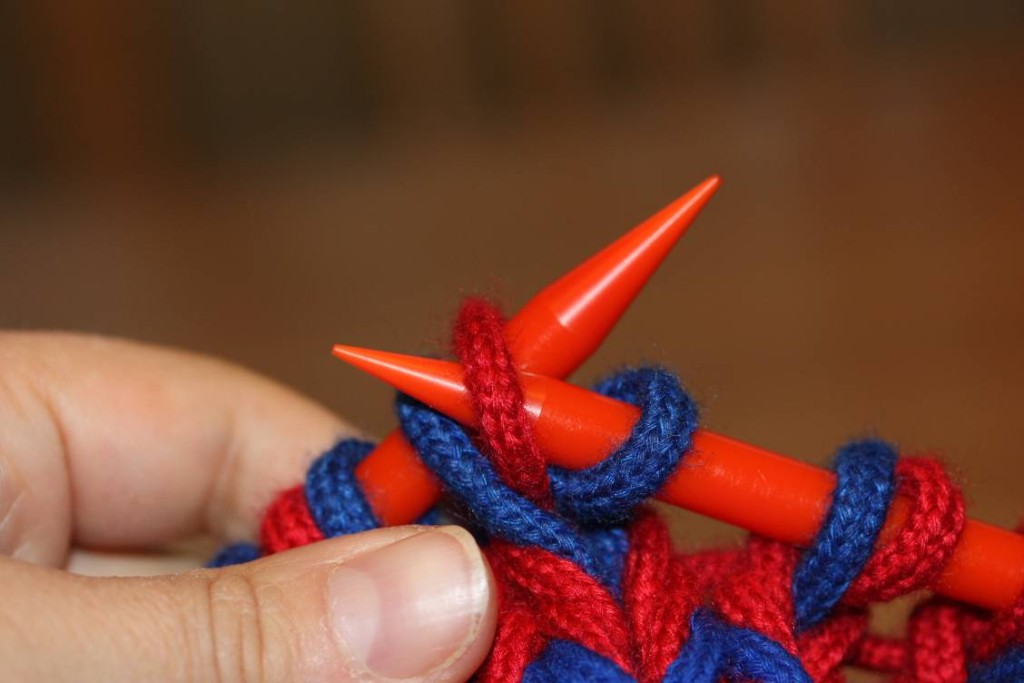 ... and transfer first stitch on left needle to right, dropping the second stitch off the needles.
... and transfer first stitch on left needle to right, dropping the second stitch off the needles.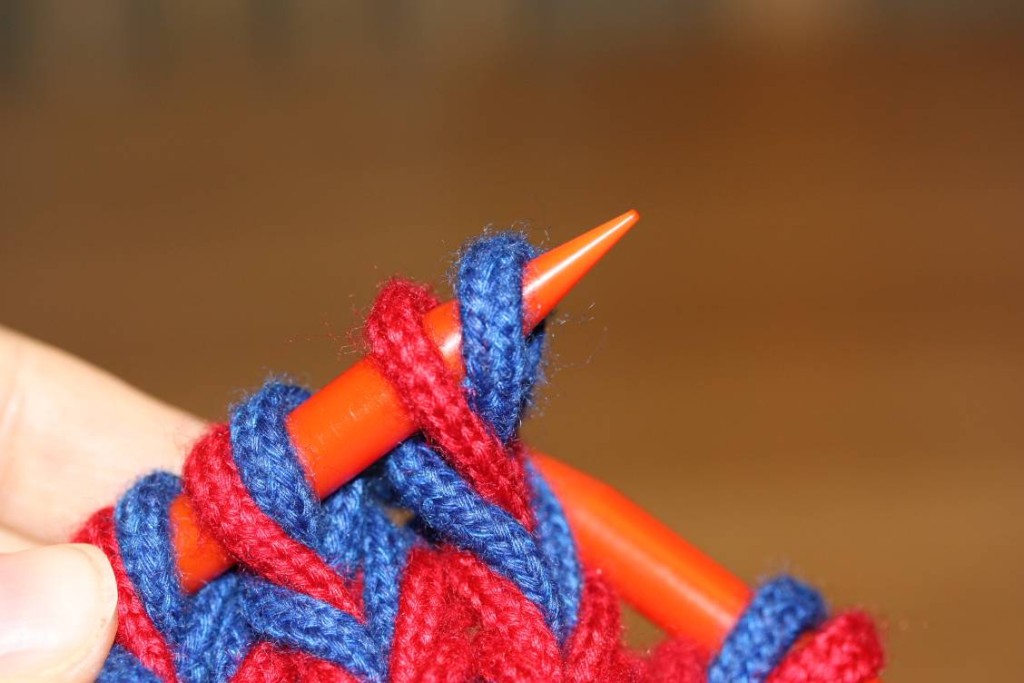 Then transfer both stitches to the left needle.
Then transfer both stitches to the left needle.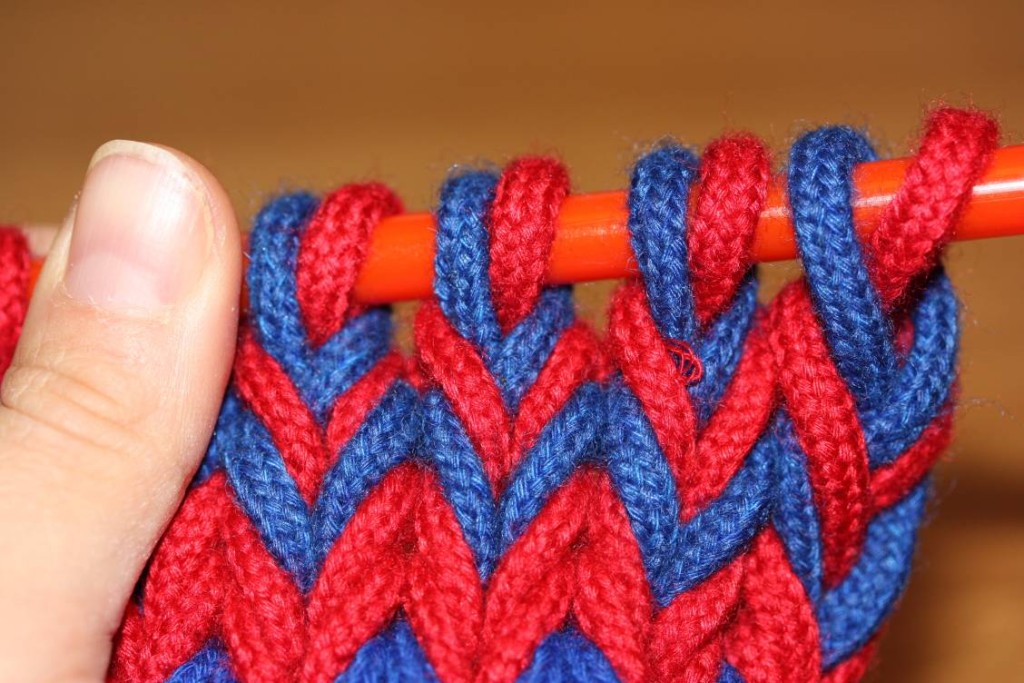 The result after one more regular row: after the return row, the stitches that were worked in the return row are twisted...
The result after one more regular row: after the return row, the stitches that were worked in the return row are twisted...